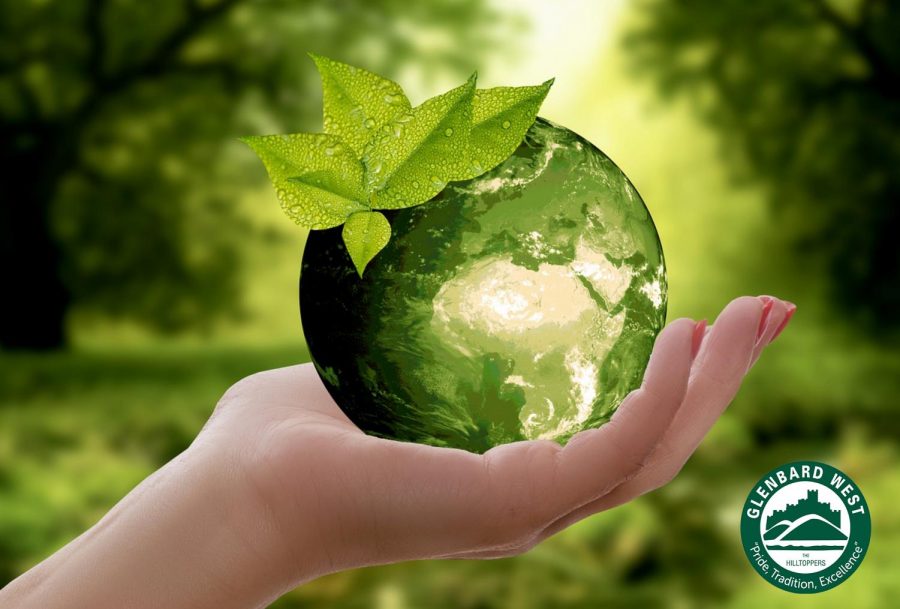Opinion: Our planet needs help and here is what you can do
Years and years have passed and the question still remains: What does the future of planet Earth look like? Many people have largely become concerned about how organisms will survive in the time to come with ever-growing amounts of pollution. The World Wildlife Fund states that one look at “any ecosystem and there could be multiple forms of contamination.” Pollution might not be easy to see in an environment that overall looks clean and full of life. There are many things that the human eye can miss and animals cannot see.
For example, natural bodies of water may not be in the cleanest condition. According to Globe Water, “18 billion pounds of post-consumer plastic waste drains into oceans yearly.” Water isn’t the only element that has been polluted: Our World in Data states, “Air pollution has a range of negative impacts, including human health, damage to ecosystems, food crops and the built environment.”
There are numerous things that humans can do to help out our ecosystems. After all, humans are organisms with the greatest capabilities and therefore have a responsibility to save the planet. Find out how you can make your mark!
1. Throw out your belongings in the correct place
There is much importance to separating plastic garbage from plastic that is recyclable. Plastic garbage that is discarded into nature can become an extreme hazard for wildlife. As reported by Ocean Crusaders, “at least two thirds of the world’s fish stocks are suffering from plastic ingestion.” That kind of plastic needs to go into the garbage. Other plastics are recyclable. Check the bottom of your plastic products to see if it has the “recycle” stamp on it. Besides putting your plastic recyclables in the correct spot, you should also be aware of recycling your paper products. Recycled paper products can then be used to create cardboard, office paper, or newspapers. University of Southern Indiana states that “each ton (2,000 pounds) of recycled paper can save 17 trees.” To put these methods into use, you can simply have two garbage bins in your house: one for organic materials and one for plastic and paper. At West, there are clearly marked garbage bins, so take the time to walk over and put your garbage or recyclables where they belong.
2. What about that glass?
If you ever end up with glass that you want to get rid of, there are two things that can be done. If the glass is not able to be used, it can be thrown along with the plastic and paper in the recycling. Your other option is to reuse. Jars and containers can be used for various reasons such as storage for food and everyday materials. It can also be used for decoration and artwork. Better yet, as stated in the Glass Packaging Institute, glass can be “recycled endlessly without loss in quality or purity.” Use your abilities and get creative.
3. Use the reusable
Many students bring their lunches in brown bags or even plastic bags with a plastic fork or spoon and a plastic water bottle. These are just more things to be thrown out. As an alternative to those things, try getting a lunch bag with utensils from home and a metal water bottle. These items can be brought back home, washed, and taken the next day for another enjoyable meal. Companies like Snack Taxi and EcoBagIt even have baggies to keep sandwiches and mini-snacks like chips, nuts, fruit, etc. which can be brought back home after eating lunch. In addition to being fewer things to throw out, having these items can essentially be a money-saver.
4. Cut down that water time
Many love a long and hot shower, but many forget that water is a limited natural resource. In addition to wasting this resource, when water is used too much, bills start to get higher. In agreement with the United States Environmental Protection Agency, “40 out of 50 state water managers expect water shortages under average conditions in some portion of their states over the next decade” and this will continue if nothing is done. There are several things that everyone can do starting in their own home to resolve this conflict. For one, try cutting down shower time. This can be done by using a timer or listening to some favorite songs. If the dishes need to be washed, scrub all of it with soap first, and then rinse it off to prevent unnecessary water flow. Brushing your teeth? Turn off the faucet! While teeth are being brushed, water does not need to be running.
5. Save the turtles! Use reusable straws
Nowadays, people are hearing the popular mantra, “save the turtles.” In response to this, metal straws are being bought. However, is the actual benefit of doing this known? A couple years ago, National Geographic discovered a turtle with a straw lodged up its nose. This can be interpreted as inhumane and careless. Buying reusable straws can cut down on the number of straws being used every day and can prevent it from destroying an ecosystem. To aid this, Starbucks sells reusable cups for customers to use for their drinks. Again, this is a method of waste reduction.
6. Bring your own bag for groceries
Plastic shopping bags are filling landfills and animals have been suffocated by them. For every grocery trip a person makes, up to 15 bags can be used and even more. Ocean Crusaders claims that “it can take anything between 20-1000 years for a plastic bag to break up.” Many grocery stores, like Mariano’s, offer recycling receptacles for plastic bags. Mariano’s has even stated that they will be phasing out plastic bags themselves. As an alternative, people can buy some reusable shopping bags to bring to every shopping trip.
These things are a few of the numerous methods to help to preserve Earth’s natural beauty. If the world should prosper in the future, it is in humanity’s best interest to use these methods. It is time for students to step up, do our part, and repay the planet for keeping us alive.

Olivia Edakkunnathu is a senior at Glenbard West and is a features editor for The Glen Bard. Along with writing for the newspaper, she is a part of STEM...





